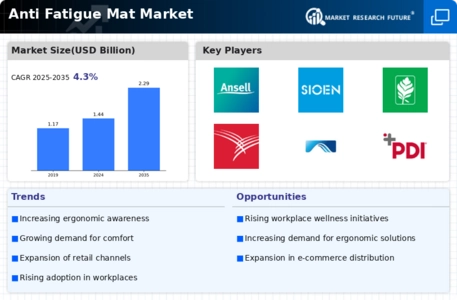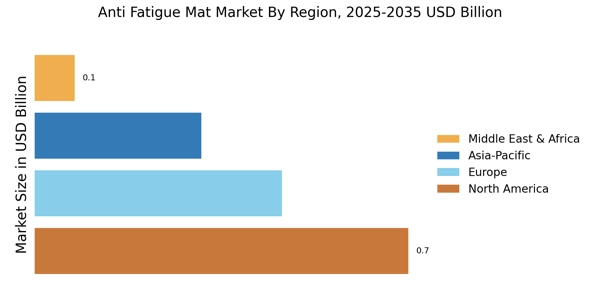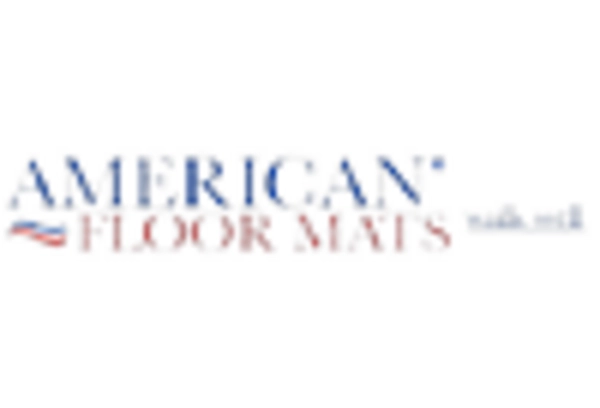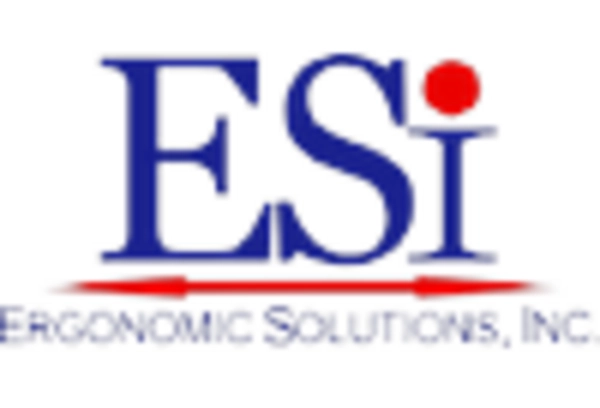The Anti Fatigue Mat Market is currently characterized by a dynamic competitive landscape, driven by increasing awareness of workplace ergonomics and employee well-being. Key players such as Ergonomic Solutions (US), Crown Matting Technologies (US), and Notrax (US) are at the forefront, each adopting distinct strategies to enhance their market positioning. Ergonomic Solutions (US) focuses on innovation, particularly in developing mats that incorporate advanced materials for improved comfort and durability. Meanwhile, Crown Matting Technologies (US) emphasizes regional expansion, targeting emerging markets to broaden its customer base. Notrax (US) appears to be leveraging digital transformation, enhancing its online presence to facilitate direct-to-consumer sales, which collectively shapes a competitive environment that is increasingly reliant on technological advancements and customer engagement.
The business tactics employed by these companies reflect a nuanced understanding of market demands. Localizing manufacturing has become a prevalent strategy, allowing firms to reduce lead times and adapt products to regional preferences. The market structure is moderately fragmented, with several players vying for market share, yet the influence of major companies remains substantial. This competitive structure fosters innovation, as companies strive to differentiate their offerings in a crowded marketplace.
In August 2025, Ergonomic Solutions (US) launched a new line of eco-friendly anti-fatigue mats, which utilize recycled materials. This strategic move not only aligns with the growing consumer demand for sustainable products but also positions the company as a leader in environmental responsibility within the industry. The introduction of these mats is likely to attract environmentally conscious consumers, thereby enhancing brand loyalty and market share.
In September 2025, Crown Matting Technologies (US) announced a partnership with a leading health and wellness organization to promote the benefits of anti-fatigue mats in reducing workplace injuries. This collaboration is significant as it not only elevates the brand's visibility but also reinforces the importance of ergonomic solutions in enhancing employee health. Such partnerships may serve to educate potential customers, thereby expanding the market for anti-fatigue mats.
In July 2025, Notrax (US) unveiled a digital platform that allows customers to customize their anti-fatigue mats based on specific workplace needs. This innovative approach is indicative of a broader trend towards personalization in product offerings, which could enhance customer satisfaction and retention. By providing tailored solutions, Notrax (US) is likely to strengthen its competitive edge in a market that increasingly values customization.
As of October 2025, the competitive trends within the Anti Fatigue Mat Market are heavily influenced by digitalization, sustainability, and the integration of artificial intelligence in product development. Strategic alliances are becoming more prevalent, as companies recognize the value of collaboration in enhancing their market presence. Looking ahead, it appears that competitive differentiation will increasingly pivot from price-based strategies to a focus on innovation, technological advancements, and supply chain reliability, suggesting a transformative shift in how companies approach market competition.


















Leave a Comment